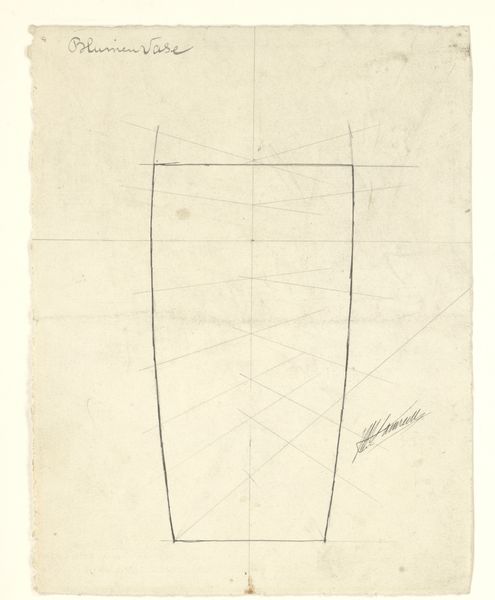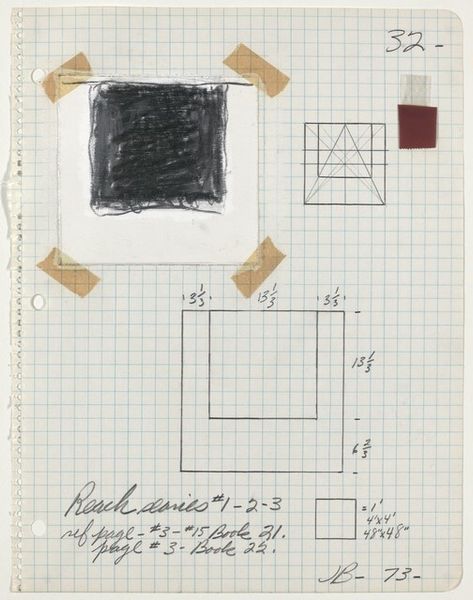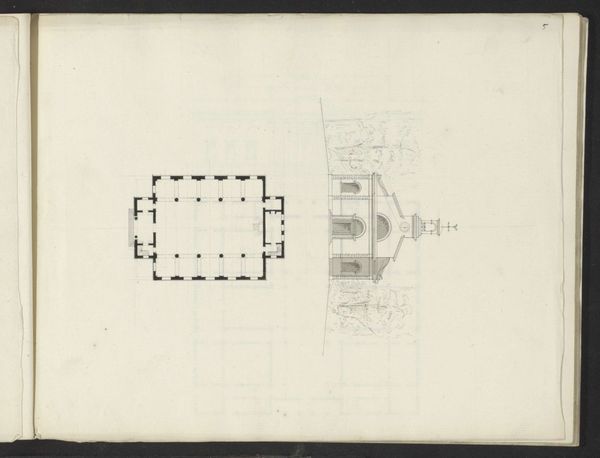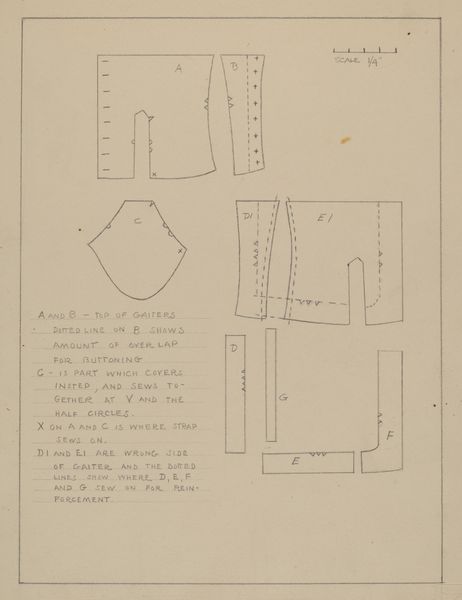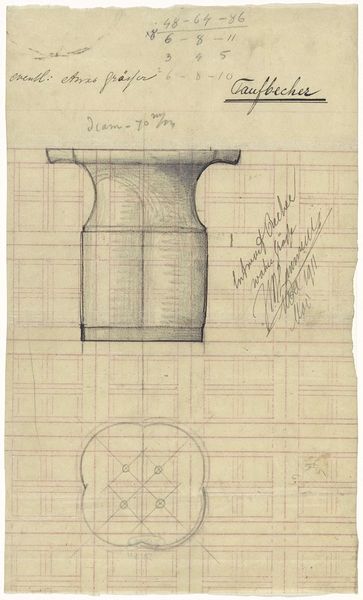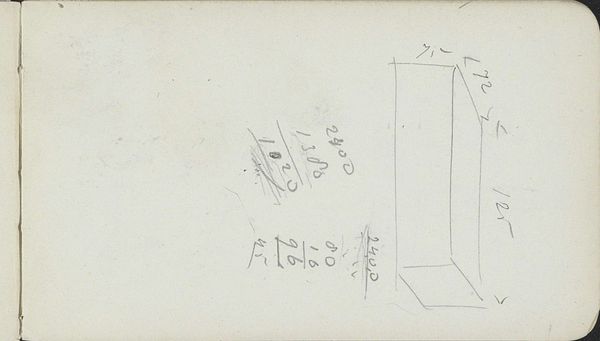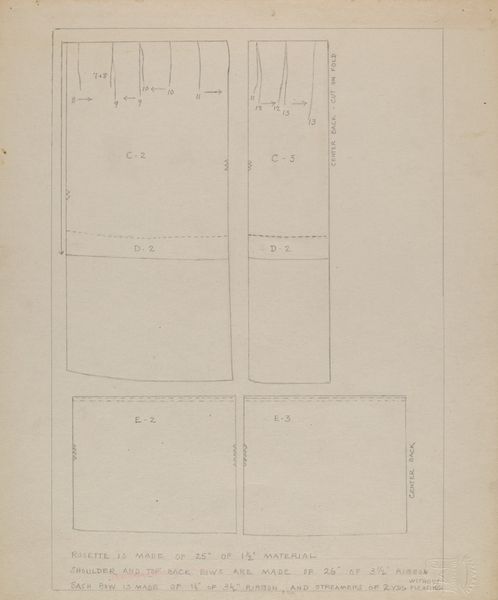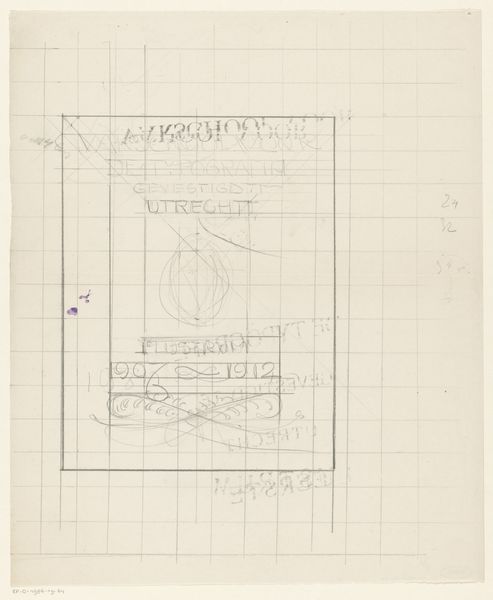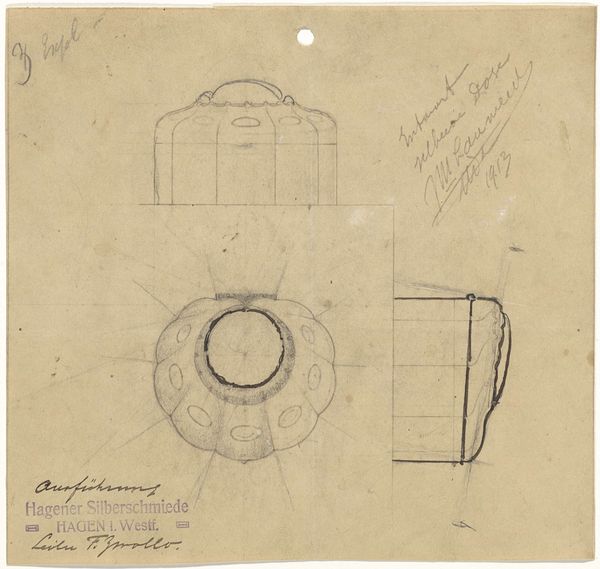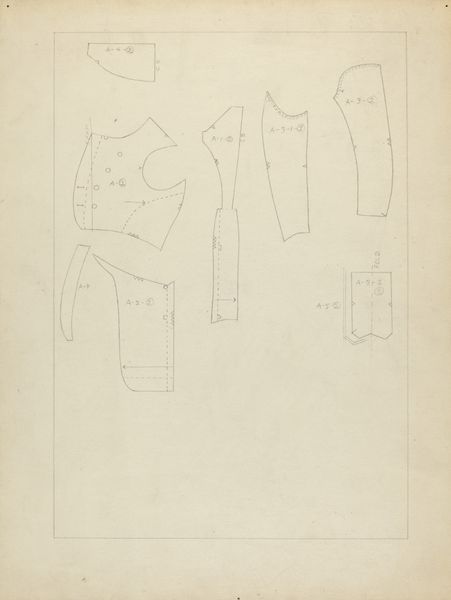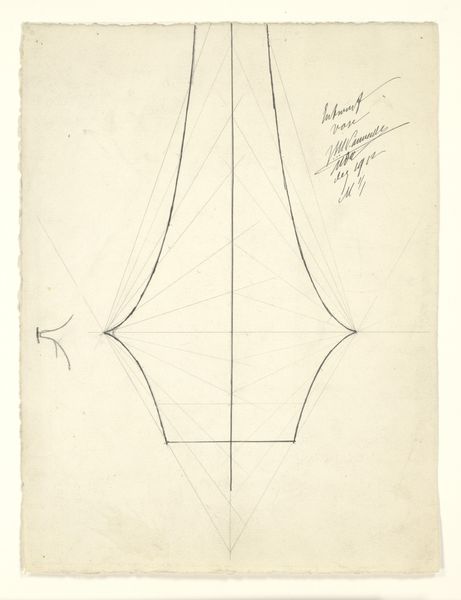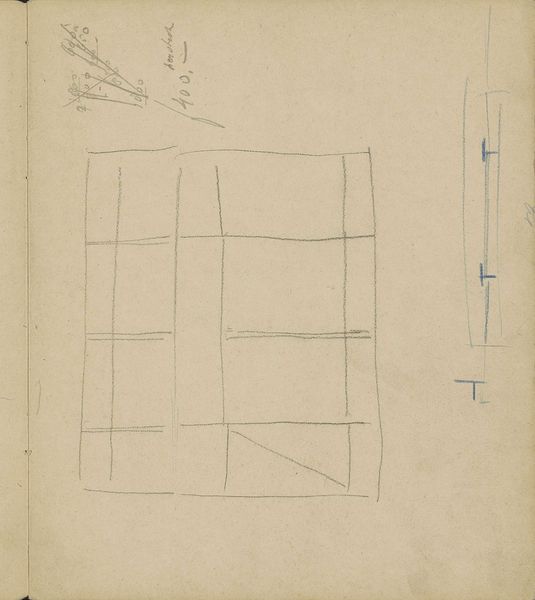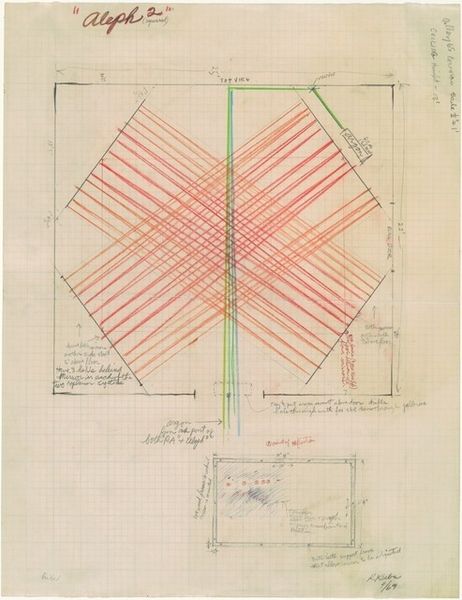
drawing, paper, pencil
#
drawing
#
etching
#
paper
#
geometric
#
pencil
#
sketchbook drawing
Dimensions: height 130 mm, width 202 mm
Copyright: Rijks Museum: Open Domain
Editor: So, here we have Mathieu Lauweriks's "Ontwerp voor een doopbeker," a design for a baptismal font, from around 1911 to 1915. It's rendered in pencil and maybe some etching on paper. I'm struck by how… precise it is, almost technical. What do you see in this piece? Curator: I see more than just a design for a baptismal font. I see a statement about power, religion, and architecture intersecting. Notice the strict geometry, the use of the grid. This was created in a period of immense social upheaval, right? The rise of industrialization was challenging traditional structures, including the Church. Editor: Yes, definitely a time of change. So, how does that connect to this seemingly simple drawing? Curator: Well, Lauweriks was deeply involved in architectural theory, searching for universal principles, almost spiritual truths, within geometric forms. Isn't a baptism a ritualistic cleansing? A new beginning? By using this rigid structure, he might be suggesting the Church *should* provide that unwavering foundation, a return to order in a chaotic world, maybe even using architecture and design to reinforce traditional belief systems.. Does that make sense? Editor: It does. So, the geometry isn’t just aesthetic, it's a statement about societal roles? About the power dynamics between the individual and the institution? Curator: Exactly! And consider who this piece would have served - the wealthy elite likely commissioning such a font. Doesn't the artwork start becoming more interesting when seen within the confines of race, class, and gender constructs? Editor: Absolutely. I was just seeing a design, now I see social commentary embedded in it. It’s making me reconsider all design choices. Curator: Precisely. Every aesthetic choice is a sociopolitical act. Now, how can we challenge the current definitions in art history and create even deeper conversations?
Comments
No comments
Be the first to comment and join the conversation on the ultimate creative platform.

